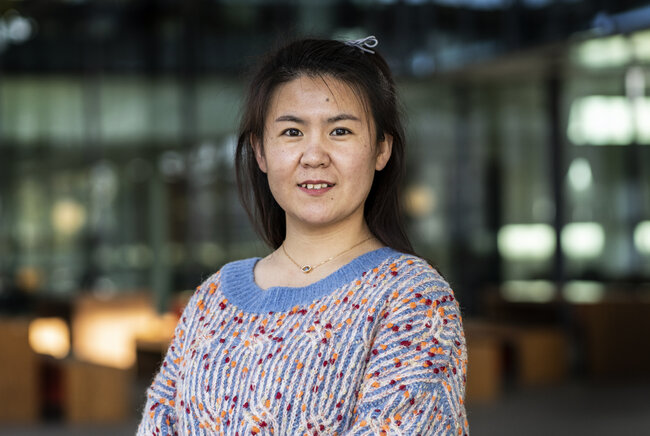Exploring metachronal motion in artificial cilia inspired by nature
Zhiwei Cui defended her PhD thesis at the Department of Mechanical Engineering on March 14th.

Biological cilia, delicate hair-like organelles adorning cell surfaces, have long fascinated scientists with their collective wavelike motion known as metachrony. This rhythmic motion plays a crucial role in generating fluid flow, contributing to various biological processes. Inspired by nature's ingenious mechanisms, for her PhD research Zhiwei Cui has delved into the realm of artificial cilia, aiming to replicate their functionality in microfluidic systems. The results of this research can contribute to new methods to realize fluid flows in microfluidic applications, such as lab-on-a-chip and organ-on-a-chip.
There are two primary ways to achieve metachronal motion of magnetic artificial cilia. One method is to apply different forces to each cilium in an array. In this thesis, Cui described how she realized the metachronal motion of magnetic artificial cilia through this method by using an actuation setup consisting of an array of rod-shaped magnets (magnetic-belt), translating underneath a microfluidic device containing a cilia array. This generates a time-dependent non-uniform magnetic field, resulting in a phase difference between consecutive cilia, and thus metachrony. The other method is to design an array of cilia each with a different response to a uniformly applied stimulus such as a uniform magnetic field. This approach was not investigated for the thesis.
Symplectic and antiplectic metachrony
However, we realized that both these methods face problems in further miniaturization because they require either control of individual cilia properties or the generation of a complex external magnetic field. Furthermore, these methods can only achieve either symplectic or antiplectic metachronal motion using the same patch of cilia, limiting the versatility. To solve this problem, we introduce a concept that generates metachronal motion of identical cilia in a rotating uniform magnetic field. This was achieved by integrating a paramagnetic substructure in the substrate underneath the magnetic artificial cilia array. Uniquely, we can create both symplectic and antiplectic metachrony by changing the relative positions of cilia array and substructure.
Metachronal motion of artificial cilia
Furthermore, we propose a third method in this thesis to realize the metachronal motion of magnetic artificial cilia by attaching cilia arrays to curved surfaces, with different designs of curvature. The curvature results in neighboring cilia making different angles with an applied uniform magnetic field, resulting in a phase difference in the motion between neighboring cilia when applying a uniform rotating magnetic field, leading to metachronal motion. We also realized two different metachronal motions with opposite wave propagations through this method by designing the curvature of the glass substructure, we even realized the combined motion of these two metachrony. Besides metachronal motion of artificial cilia, we studied the cleaning properties of rotating biological-sized magnetic artificial cilia.
Read more about this research in the paper of August.
Title of PhD thesis: Metachronal motion of magnetic artificial cilia. Supervisors: Prof. Jaap den Toonder, and Dr. Ye Wang.